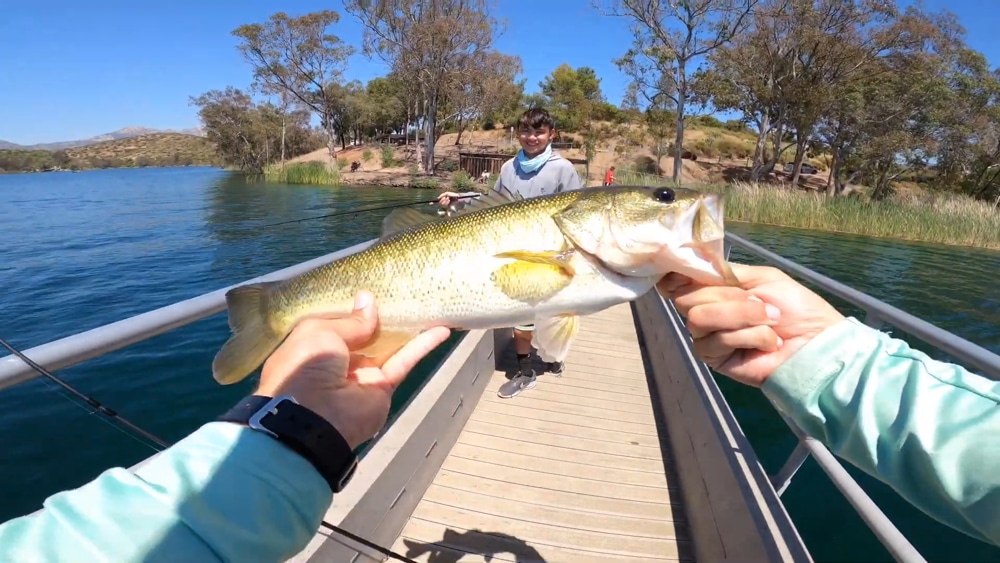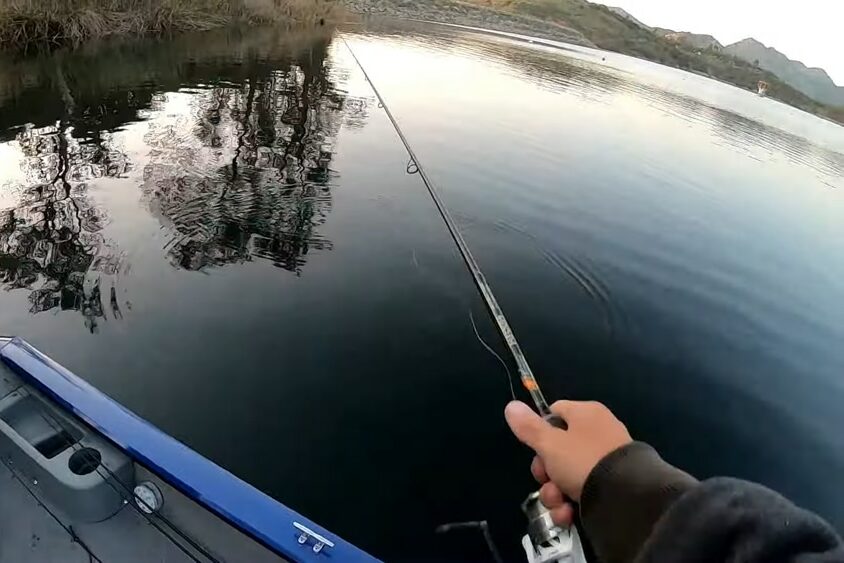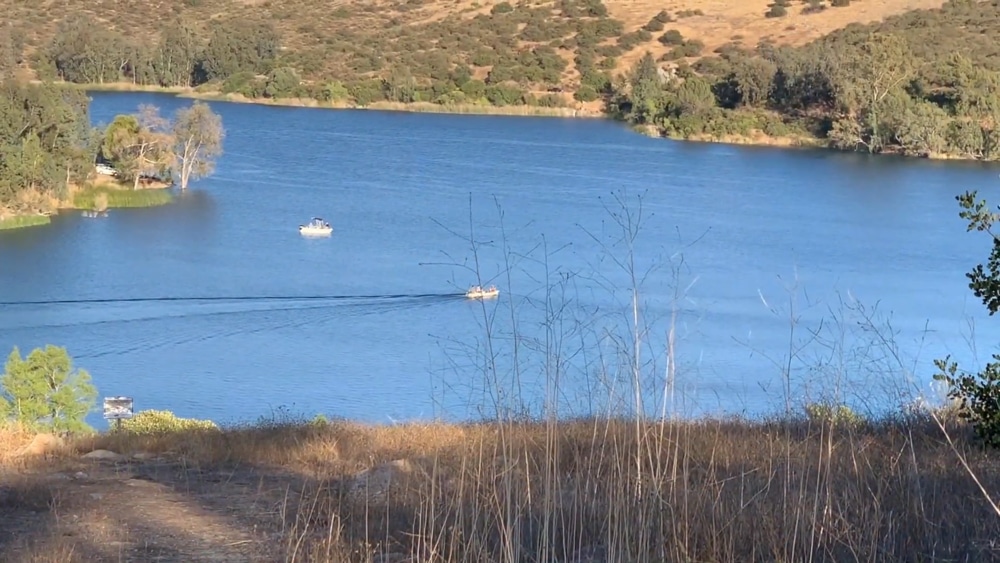Fishing enthusiasts looking for an idyllic angling experience need not search any further than Lake Jennings. Nestled in the heart of San Diego County, California, Lake Jennings offers a serene setting surrounded by picturesque landscapes and abundant aquatic life. Whether you’re an avid angler or a novice seeking a peaceful escape, this article will guide you through everything you need to know about Lake Jennings fishing. So grab your fishing gear, cast your line, and let’s dive into the depths of this captivating angling destination.
Fish Species at Lake Jennings
Rainbow Trout
Rainbow trout (Oncorhynchus mykiss) are a popular fish species found in Lake Jennings. They are known for their vibrant colors, including a pink stripe along their sides, and are prized for their fighting ability and delicious taste. Rainbow trout thrive in cold water and are often stocked in the lake for recreational fishing.
Largemouth Bass
Largemouth bass (Micropterus salmoides) is another prominent fish species at Lake Jennings. They are known for their large mouths and aggressive feeding behavior, making them an exciting target for anglers. Largemouth bass prefers warm water and can often be found near submerged structures, such as fallen trees or underwater vegetation.
Bluegill
Bluegill (Lepomis macrochirus) is a popular panfish species found in Lake Jennings. They are known for their blue-green coloration and willingness to bite on various baits and lures. Bluegill can often be found in shallower areas of the lake, particularly near submerged vegetation or rocky structures.
Channel Catfish
Channel catfish (Ictalurus punctatus) is a common species found in Lake Jennings. They have a distinct, forked tail and are known for their excellent sense of smell, which they use to locate food on the lake bottom. Channel catfish can grow to impressive sizes and provide an exciting challenge for anglers targeting them.
Black Crappie
Black crappie (Pomoxis nigromaculatus) can be found in Lake Jennings as well. They are a popular panfish species known for their tasty white meat and distinctive dark spots on their sides. The black crappie is often found in deeper waters near submerged structures and can be caught using various baits and techniques.

Lake Jennings Fishing Hotspots
Lake Jennings offers several prime fishing spots that are known for their productivity. Whether you’re targeting largemouth bass, bluegill, or rainbow trout, exploring these hotspots will increase your chances of landing a memorable catch. Here are some notable fishing areas at Lake Jennings:
Hermit Cove
Hermit Cove is a popular fishing spot known for its largemouth bass and bluegill abundance. The cove provides ample cover and structure for these species, including fallen trees and submerged vegetation. Anglers can try casting near these structures or using topwater lures to entice the bass. Bluegill can be caught using small jigs, worms, or live bait near the cove’s edges.
Eagle Point
Eagle Point is another excellent location to target largemouth bass and bluegill. This area features rocky structures and deeper water, attracting fish seeking shelter and feeding opportunities. Anglers can try using crankbaits, spinnerbaits, or plastic worms to entice the bass. Using small hooks and bait, such as worms or insects, can yield good results for bluegill.
Half Moon Cove
Half Moon Cove is a prime spot for targeting largemouth bass and bluegill. It offers a mix of shallow and deeper waters, along with submerged structures and vegetation that provide ideal habitats for these species. Anglers can try using soft plastic baits, jerk baits, or topwater lures to entice the bass. Using small jigs, worms, or even fly fishing techniques can be effective for bluegill.
Shoreline near the Campground and Eastern Shoreline
If you’re looking to catch rainbow trout, the shoreline near the campground and the eastern shoreline of Lake Jennings are excellent choices. These areas are often stocked with trout, attracting anglers seeking this prized species. Anglers can use a variety of baits and lures, such as PowerBait, spoons, or spinners, to entice the trout. Fishing during the early morning or late evening can often yield the best results.

Local Tips and Insider Knowledge
To make the most of your fishing trip to Lake Jennings, here are a few insider tips:
- The early morning and late afternoon hours often yield the most active fishing.
- Pay attention to the weather conditions and adjust your fishing approach accordingly.
- Engage with fellow anglers and local experts to gather valuable insights and recommendations.
- Carry a variety of bait and tackle options to adapt to the preferences of different fish species.
- Practice catch and release to contribute to the sustainability of Lake Jennings’ fish populations.
Rules and regulations for fishing at Lake Jennings
Lake Jennings is a recreational fishing area located in San Diego County. The lake has been stocked with bluegill, catfish, largemouth bass, and redear sunfish. All fishing regulations are enforced.
The following are the regulations for fishing at Lake Jennings:
- An adult must accompany children under the age of 16.
- One rod and reel are allowed per angler.
- The daily bag limit is five fish, including no more than two basses (largemouth or smallmouth), one catfish, and three sunfish.
- Only artificial lures or flies may be used for fishing.
- Fishing from any bridge, public road, vehicle, or boat ramp is unlawful.
- The use of live bait is prohibited.
- Possessing any fish not caught within the boundaries of Lake Jennings or tributary streams is unlawful.
- No fishing from 10 p.m. to 4 a.m. and no night fishing is allowed except for catfish by use of rod and reel with artificial lures or flies only, from 10 p.m. to midnight.

Planning Your Lake Jennings Fishing Trip
To ensure a memorable fishing experience at Lake Jennings, consider the following steps when planning your trip:
- Research the best time to visit based on the fish species you wish to target.
- Make reservations for camping or nearby accommodations well in advance.
- Familiarize yourself with the fishing regulations, permits, and licensing requirements.
- Pack appropriate fishing gear, including rods, reels, lines, hooks, and bait.
- Prepare for changing weather conditions by bringing suitable clothing and accessories.
- Create an itinerary that includes fishing, recreational activities, and nearby attractions.
- Embrace the tranquility of Lake Jennings and savor every moment of your fishing adventure.
FAQs
What is the current water level at Lake Jennings?
The water level at Lake Jennings varies depending on the time of year and how much rainfall has occurred in recent months. The lake can fluctuate dramatically in a short period of time due to the nature of its construction.
During heavy rainfall, water is pumped out and stored in a series of holding ponds onsite. The lake then slowly refills as needed over time.
What is the water temperature at Lake Jennings?
The water temperature at Lake Jennings is around 89.6°F. The water temperature at Lake Jennings changes throughout the day. Different activities available at Lake Jennings will keep the kids entertained.
Are there any upcoming events at Lake Jennings?
Yes, the Lake Jennings website has a list of upcoming events. You can sign up to receive the latest news, events, and updates about San Diego. By visiting their website, you can also find more fishing spots in San Diego County.

